
|
MUSIC RECORDING The means of making and recording music have fascinated me since I was young. My parents gave me an old Phillips reel to reel recorder when I was 9 and I had endless fun with it. Valves, 'magic eye' for level when recording and very slow tape speeds, just 3 ¾ inches per second. My whole life in music stems from my interest in audio technology in a way, as I was given my first lesson on the guitar (go on, have a go, its not so hard...ha ha) by the guitarist in a band who I was sound engineering for called Dark Globe. They had no money, so I built a set of PA amplifiers, a little 12 channel mixer and scrounged up some ropey speakers from somewhere. I guess they paid me back in a lifetime of guitar playing, not such a bad deal for me. My first ever real recording equipment was a lovely old Revox G36, a valve 1/4” tape machine that recorded in stereo at 15 IPS (inches per second, the tape speed). 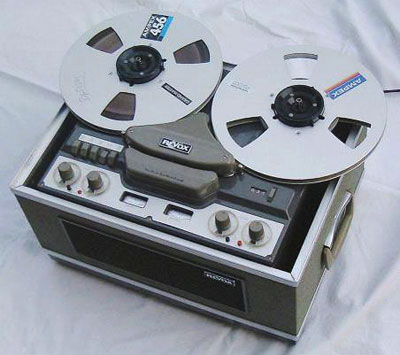
It had a great sound, but for recording stereo it could only be used for direct live takes. I had a lot of fun with mono, bouncing tracks back and forth, but mono was very very old hat in the early 80's. At that time low cost multitrack recording was very new – the first 'Portastudio' 4 track cassette machines were just becoming available. They sounded terrible, but one could overdub music for the first time, bounce tracks and have stereo. Inspired by this I built my own 4 track, based on an old G36 chassis that I bought. I replaced the 2 tracks heads with 4 track heads, built new, solid state record and playback electronics for it and then, eventually, new transport control electronics. It turned into an epic project in the end (this was before commonly available microprocessors, so the control logic was all discrete TTL, lots of it), but the experience was probably what landed me my first job after college, at the Roundhouse Recording Studios. 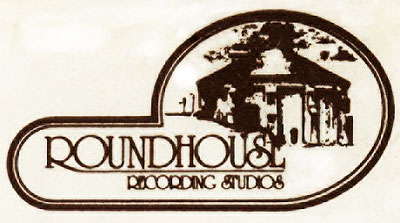 Starting at the Roundhouse was stepping straight into the big league. One of the best studios in the world at the time, they had SSL 4000 and 6000 E series desks, Studer A80 and A800 tape machines and more outboard toys than one could shake a stick at. It was a sharp learning curve. 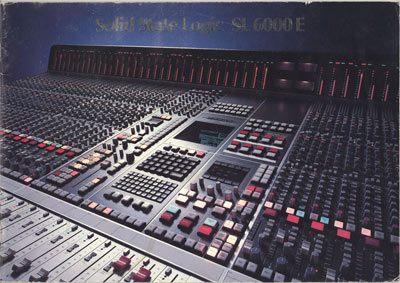
It was very hard, given the technology of the day, to make records outside of a professional recording environment. After several decades of development such environments had become very slick. Many people think today that records from the late 80's and early 90's are the best sounding recordings to date. Whilst I disagree with this as a generalisation, they certainly do have something entirely missing from most modern records. Partly this is because of the modern obsession with multiband compression in mastering, which wrecks the sound of recordings, but it is also partly because people generally spent a lot more time and effort making even the simplest recordings, using all high quality analogue equipment. The engineers and producers were often very well trained by the nearest thing the late twentieth century had to a genuine apprenticeship, the years spent as a tea boy then assistant engineer (now mostly gone, replaced by endless, utterly useless college courses). We had some really nice old equipment at the Roundhouse as well, including a Hammond C3 organ, several EMT echo plates and lots of weird old outboard, which has left me with a lifelong enjoyment of cranky old recording technology, as long as it doesn't involve tape machines (unless they're a Studer A80, the only tape machine ever made that just works and sounds great). The studio had been going since the mid 1970's when Gerry Bron had started it to record music for his label, Bronze Records. All the early Motorhead, Uriah Heap and Osibisa were recorded there. I still have an old 2” tape that I rescued from a skip when Gerry was having a clearout one day, labelled 'Lemmy Goes To The Pub'. Its terrible, they had been to the pub and they really were drunk. By the time I joined, Bronze Records had gone bust after not having enough hits and Gerry was running the Studios instead. When I decided to leave and start my own studio, Gerry took me out for a nice lunch, told me it was a good idea and then gave me a concentrated hour of advice about what to do and not to do. I took most of this advice and it served me well. The bits I didn't take usually got me in trouble. When Isabel and I started to get our studio put together I began my long hate affair with multitack tape machines. Whilst we were getting going I made my living as an on call freelance studio maintenance engineer. I had a pager, and would come out at any time of the day or night. This paid well, as you might imagine, but the work was awful. The most frequent calls were from people who owned truly dreadful tape machines. These machines built our studio. The 3M and Lyrec engineering disasters. And sometimes the Studer A800, a machine with a single, appalling design flaw that lead it to blow up once in a while. And if I (and the hapless studio owner) were really really unlucky, the Aces 24 track, made in England and so astonishingly bad that it should have had a 'Chad Valley' label on the front. Many people pine for the days of analogue tape. Up until the last few years they had a point, it did sound better than early digital recordings. But I am so glad to see the back of those stressful old dinosaurs. I do have an occasional hankering to own a Studer A80, one with a 16 track head. They have a sound all of their own, very hard to reproduce otherwise. But I also know that the cost of ownership includes a full time chap to look after it, and I am no longer that chap. Our first studio was Joe's Garage 1. We had a nice live room with a stone floor (later replaced with wood), a Studer A80 24 track and a little 32 channel Sountracs desk. I collected some nice mic's, including a number of rare old valve models, and we gained a reputation as a cheap, good place to record an album, people usually taking it elsewhere (somewhere with a better desk and outboard) to mix. The first album we recorded was Galliano's 'In Pursuit Of The 13th Note' with Chris Bangs producing. It was an auspicious start and the studio became fully booked. This encouraged us to go a bit mad and with Mark Rigamonti (now the Senior Designer at Eigenlabs) we designed and built a new, purpose designed mix room, Joe's 2. I found an SSL desk that had, astonishingly, been left outside briefly. It looked terrible, all the screws had gone rusty, and it was going cheap at £75,000 (they were about £200,000 new then). We spent a month refurbishing it until it was perfect. A Studer A800 tape machine, lots of outboard, an old EMT plate reverb, Quested monitors and we were in business. That studio ended up mixing and recording some fine records. The one I still keep the gold disc for was the 12” mixes of 'I'm Too Sexy' by Right Said Fred. I stuck my head around the door while this was being mixed and laughed. Tommy D (who was producing) looked at me , laughed as well and said 'you'll see, it's got sex in it, its going to be a hit'. It was and I still enjoy hearing it today, which shows precisely why I am not a good producer. We also did the tracking for the Stereo MC's 'Connected', albums for Eddie Reader , Bob Geldof, Boy George and Ian Dury as well as lots and lots of Hip Hop, House, and Ambient. Later that year we opened a little 'Programming Room' or Joe's 3. This had a little 24 channel Soundtracs desk, some outboard and loads of MIDI equipment. An Atari 1040 (the computer of choice for sequencing then, god help us), NS10's and a great big subwoofer completed the setup. It was cheap, well equipped and loud. It got heavily booked, and a lot of early Garage music and Drum & Bass was done there. I met Ian Ritchie (who subsequently joined Shen) when he booked it for several weeks to program a record for the comedian Craig Charles who was riding high on the success of Red Dwarf at the time. In the last period we owned Joe's we decided to take some time off from actively running bookings. We sold much of the equipment and The Orb rented the mix room for a year to make 'Orbus Terranum'. Then Morcheeba rented it from us and as far as I know they may still be there today. You can see them talking about moving in here. At the same time, the rock band Asia rented Studio 1. The SSL desk was a strange animal really. Absolutely revolutionary when it came out in the 1980's, it had fader automation (not moving faders, they didn't come along until much later) and a thing called 'total recall' that enabled the desk to remember the position of all the knobs and switches as a snapshot. An hours work and one could recall a whole mix, more or less, and continue to work on it, or make changes. Record companies and engineers loved this as it meant that they could go back into the studio and make minor changes later. This sounds like nothing now, but then it was a completely new way of working. It also had a very different sound. The 'E' series desks had a really 'clicky' (for want of a better word) EQ, hated by some, loved by others. It is in fact the sound of the late 80's and early 90's, so many records were mixed on these consoles. The 'G' series consoles that came later were supposed to sound better. I think from a 'naturalness' point of view they did, but many still loved the old EQ, rubbish as it was. Every channel also had, in addition to the normal EQ, a compressor and gate built in. This enabled one to mix with every individual track independently compressed, another part, along with the automation and use of 'layered reverbs', of the 1980's sound. I mixed Shen's 'The Spirit Of The Sea' on that SSL, and I think it still sounds good. I sold it in the end to someone in Birmingham, for as much money as I originally paid for it. They were made with high quality components, so much so that most are still in use today and fetch good prices when changing hands. When I finally surfaced from the corporate madness that was Hyperlink, my thoughts soon turned back to recording. Initially I bought one of the little Mackie D8B digital desks and had a room in my house as a little studio. I was using a PC to do the actual audio recording, using RME (link) interfaces and it quickly became clear that desk was becoming redundant. Before embarking on recording 'Gone Away' I started to use Steinberg's 'Nuendo', and that is what we used for all the live recording, running on a Sony laptop. I still use that in my studio today, but I may well switch to using Pro Tools before embarking on another serious venture. Most good mix rooms already have Pro Tools, and engineers who know it well. Mixing away from ones normal environment is a good discipline, and the hassle of transferring all the audio from Nuendo to Pro Tools is better avoided. With the increasing version numbers of the software we also experienced more unreliability problems with Nuendo, which is not funny when recording real musicians. Today I use a quad core Mac with MOTU HD192 analogue audio interfaces and RME digital interfaces. I use a MOTU 896 firewire interface when recording on site. I find, recording at 24 bit and 96Khz sample rates with good converters, that the whole process has a lovely transparency. Put a great microphone in front of something, straight into the computer and it sounds as near to real as I've ever heard before. I know that many like all the odd stuff that happens with old desks and tape machines but I'd soon as do without it for most purposes. These things are now effects to me, not infrastructure. I still like valves for some things (my favourite vocal compressor, an LA2A, is an old valve unit), but used subtly now. If you're trying to sound like someone from the 60's, this is different of course, but how dull is that as an ambition? The one thing that most people don't spend enough time effort and money on in recording is microphones. Good quality mic's have become cheaper recently, but the best are still expensive. In the same way that the last weak link in reproduction is the loudspeaker, the actual interface between the air and the electrons, so it is in recording. Even the best microphones still only approximate reality. I have a rogues gallery of favourites. The best is the Calrec Soundfield: 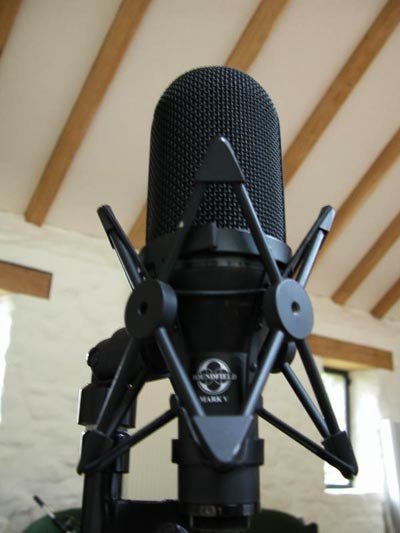
This is a microphone that captures the entire soundfield, not just point pressure. It has four internal capsules arranged in a tetrahedon, and produces an output call B-Format. One can post process the B-Format into Stereo or 5.1, moving the mic around, changing its position and pattern, all after the event. It is, for me, the most natural, least coloured and most flexible microphone I have ever used. If you only own one mirophone, and can afford it, get this one. Richard Ashrowan has been using my field portable one a lot, along with an HHB hard disk recorder, to make 5.1 recordings on location. He uses them as part of his visual art and some of them sound stunning. 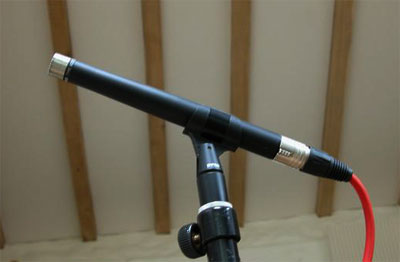
I'm also very fond of the DPA 4006. This is another mic that's been around for a long time. It used to be the Bruel And Kjaer 4006 before they spun it off as DPA in 1993. Bruel and Kjaer used to (and still do) make the world's best instrumentation microphones, and the 4006 design is just that. Utterly transparent, almost impossible to overload (it makes a good bass drum mic), completely quiet. A pair of these as spaced omni's on a piano and you won't do better. And my old favourite, the AKG 414. For me, with my raspy, tuneless, bass voice its suits very well. I also find that it's great on acoustic guitars, if I don't have a Soundfield handy, as a Blumlein Pair. I used to own a valve one of these, the C12, but honestly, I wouldn't bother again. The valve C28 (which I still have) sounds more characterful to me. I've never been a fan of Neumann mics (and I really don't like the old standard, the U87) but I have a pair of TLM103's, which are handy. Very neutral, with the lowest self noise of any mic on the planet, they do good service for vocals and instruments. If I need to record an electric guitar, it's an SM57 and 414 pair for me, and a bass drum always gets my RE20 or if I want a very natural sound, a 4006, perhaps both. Sundry percussion or toms, the old favourite MD421's. In terms of outboard, I don't really use that much anymore. For vocal compression, my Teletronix LA2A is hard to beat. One knob, turn it and it makes vocals sound better. For electric instruments the same can be said for the LA3A, a transistor version of the same. I own the reissue versions of both of these now (my originals went when we sold Joe's all those years ago) and they are great. If I'm using software plug-in compression I like the Waves Renaissance compressor, it sounds quite nice. By way of EQ I have a couple of Tube Tech units. Copies of the old Pultecs, these sound very good. Occasionally I might use a Focusrite box, but I've never really got on very well with Rupert Neve's EQ designs. I never did like his desks and the Focusrite's are a kind of uber version of that – very discreet, but I like EQ to mess up a sound at bit. Otherwise, why use it? Just move the microphone or find a different instrument... Once again, I find the Renaissance EQ's from Waves quite passable as software EQ. I have a couple of nice outboard digital reverb units, a Lexicon 960L and TC Electronics System 6000. The Lexicon has all the old 480L algorithms, some of which I'm very fond of, and the TC has some really nice tuned (and tuneable) spaces, particularly in 5.1. Both are a pain because I have to downsample to 48K to and from them (some of the better algorithms won't run at 96Khz sampling rates), so I have a load of RME rate converters to do the job, which every once in a while drop out (I think it's the ADAT light pipe from the MOTU 828 digital I/O's not being very clean), giving me a huge and unpleasant 'pop'. Suggestions from anyone as to how to fix this are very welcome. The one thing I really lack is a nice old EMT plate. When we mixed Gone Away, Phillip Bagenal at Eastcote had a very nice one, and it shows. I used to own a rare quadrophonic EMT plate at Joe's, and one day I'm going to have to get one again. The trouble is, they are 8 by 4 by 2 feet in size, weigh a ton, and need to be kept in a soundproof room. Buying the thing is the least of one's troubles! The new convolution reverbs are interesting. I haven't used one in true anger yet although we have ambitions to write one as part of the open source Eigenharp code, so I may be getting a lot more familiar with them shortly. 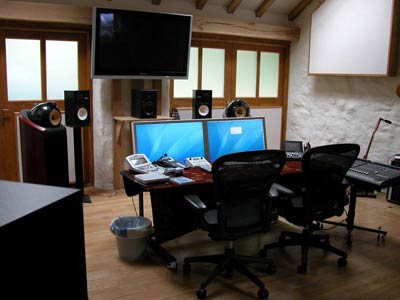
Over the years I've had all sorts of monitors. I built our first, an ATC and JBL based active system for Joe's 1, from scratch. We had Quested's in Joe's 2 as the big monitors, with Dynaudio M1's and Yamaha NS10's as nearfield. In those days, big monitors needed to be loud, and accuracy was really secondary. Most mixes actually got balanced on NS10's. I really like the Dynaudio M1's. We bought one of the first pairs ever sold at Joe's and engineers loved them. These days I have B&W 802D's as my main monitors, which are really good, with NS10's as a secondary. I use Dynaudio BM6's as centre and rear surrounds with a big Dynaudio subwoofer for the LFE channel. I still have a pair of M1's, used by Eigenlabs at the moment to test instruments, and day to day I listen to Quad 2905's in a 5.1 setup, which are astonishingly good, just not hugely loud. My trusty old Celestion Ditton 66's get an outing from time to time. All this lot are driven by my favourite amplifiers these days, the Canadian Bryston 14B's and 7B's, apart from the NS10's on which I use a Quad 520F. Despite all these lovely speakers, you still can't beat balancing on NS10's. They haven't been made for years, and truly do sound terrible, but if you balance on them your mix will always sound good elsewhere. There are a thousand theories why.... Apart from acquiring a large and inconvenient echo plate, the only change I might make soon will be to change software and converters to a ProTools system, although I'm dragging my feet at the thought of learning a whole new system. And at the expense. |
